Menus
- Howl, turn, push
- Maico MD 50 with an unmistakable sawing sound
- Nothing works without turning
- Always the right gear available

wolf
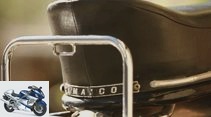
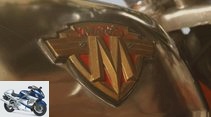

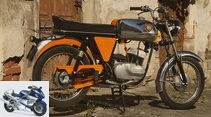
27 photos
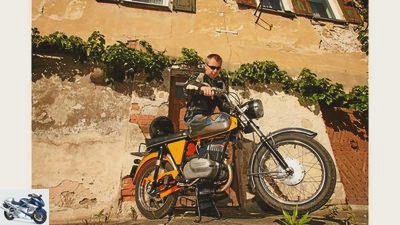
wolf
1/27
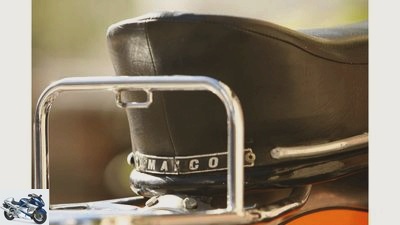
wolf
2/27
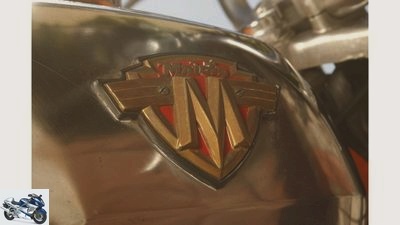
wolf
3/27
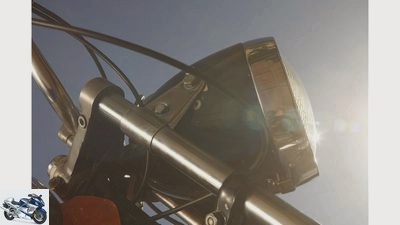
wolf
4/27
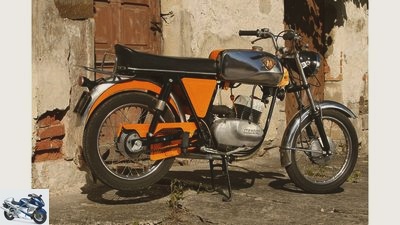
wolf
5/27
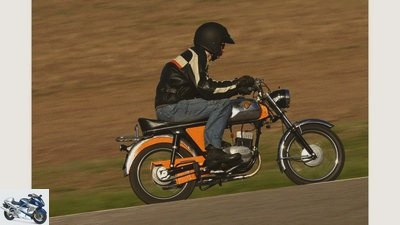
wolf
6/27
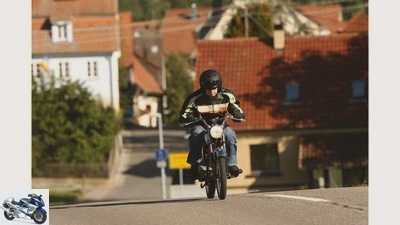
wolf
7/27
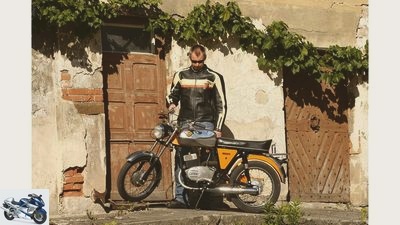
wolf
8/27
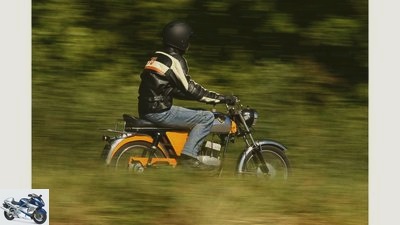
wolf
9/27
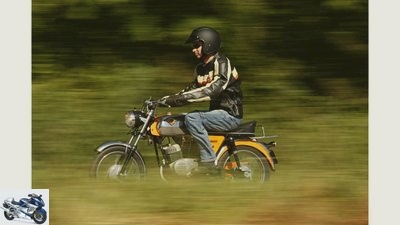
wolf
10/27
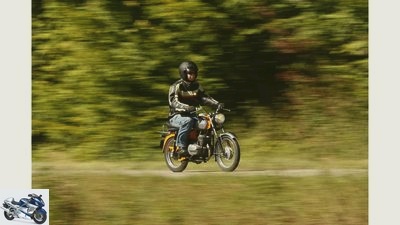
wolf
11/27
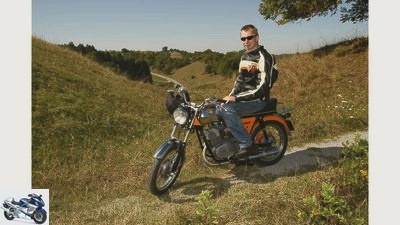
wolf
12/27
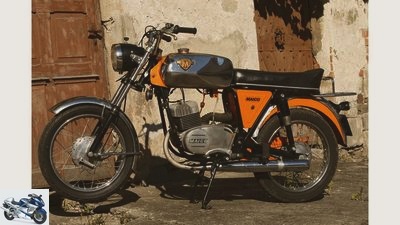
wolf
13/27
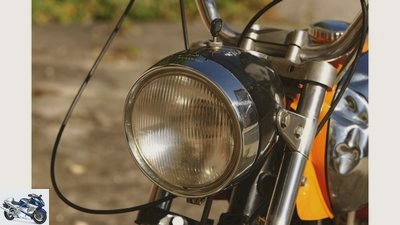
wolf
14/27
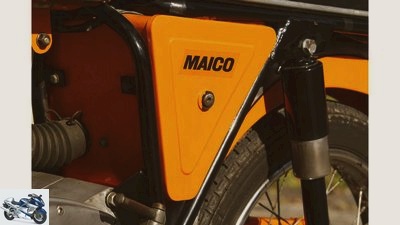
wolf
15/27
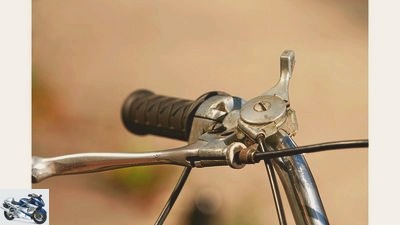
wolf
16/27
The right thumb activates the choke, which is not needed for long.
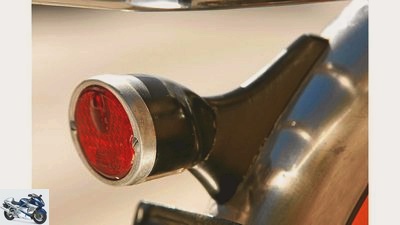
wolf
17/27
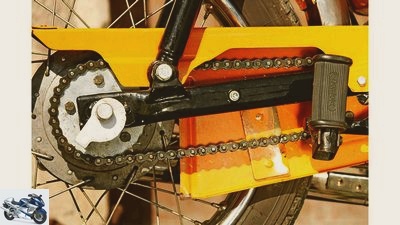
wolf
18/27
The generously dimensioned chain guard painted in the vehicle color is always useful.
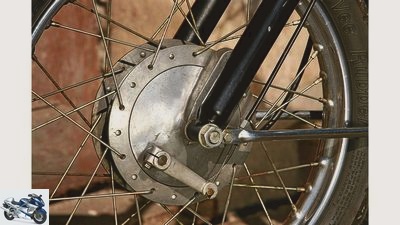
wolf
19/27
The 136 millimeter simplex drum brake at the front needs a strong hand to bring the nimble fifties to a stop.
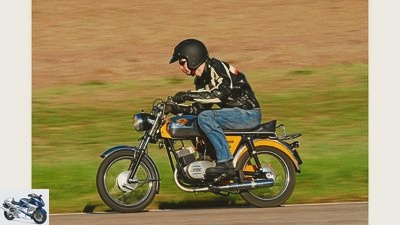
wolf
20/27
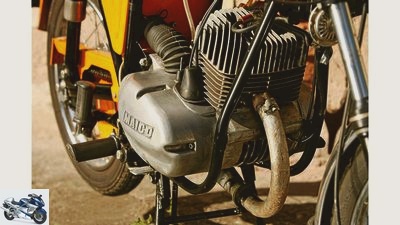
wolf
21/27
Tidy: The carburetor is located on the side under the right housing cover of the toxic two-stroke engine, directly on the rotary valve inlet.
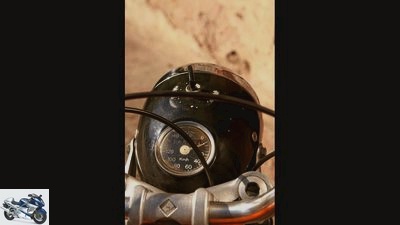
wolf
22/27
Clearly arranged: speedometer with an optimistic, far-reaching scale and odometer in the lamp housing – there is no more cockpit.
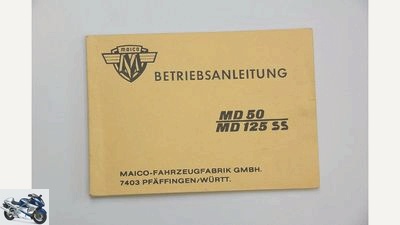
wolf
23/27
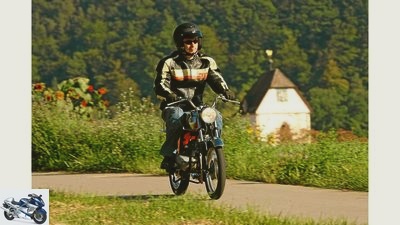
wolf
24/27
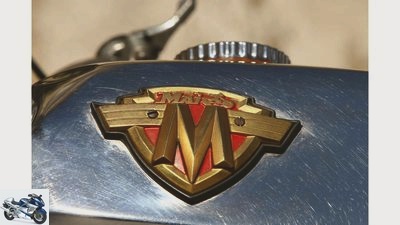
wolf
25/27
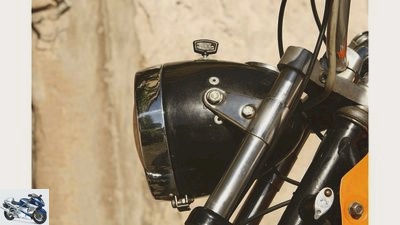
wolf
26/27

wolf
27/27
On the move with the Maico MD 50
Howl, turn, push
Content of
When it ran, it ran like the devil, the Maico MD 50 with the rotary valve motor. But she wanted to be shot. If she caused problems, on the other hand, sometimes only pushing helped.
M.Honestly: A lot was possible, back then with 16. Hard rock fans forgave old sandpit friends their pop music taste, if necessary you tolerated even the boring, stupid girlfriend of your best friend and brotherly shared the last beer with him – but with the choice of the fifties the fun stopped. Hercules or Zundapp, Kreidler or even Garelli? When choosing a brand, the cliques split into camps, and even the greatest tolerance has limits. However, some were always left out anyway, and were considered oddities anyway. Were just as feared and envied (because the boxes were so fast) as they were laughed at and pityed (when the goat didn’t work again because of a defect): the Maico drivers. Others also had to struggle with the cliches – “if it doesn’t ignite, then dap”. Haha, what were we laughing at, about the savings jokes of the buddies (the author drove with 15 Zundapp three-speed mopeds and knows such sayings).
Buy complete article

On the move with the Maico MD 50
Howl, turn, push
Rotary vane engine and spectacular six-speed gearbox
In any case, somewhere in the large community of the village youth there was almost always someone who drove Maico. And the boxes, especially the Maico MD 50 shown here with the rotary valve engine and spectacular six-speed gearbox, were always considered devices with which the competition could be left behind thanks to respectable driving performance. If, as I said, she stopped and didn’t stop herself. Above all, reliability and stability are not always among the virtues of the brand, which was founded in 1926 and which has an eventful history.
After a difficult early days, economic crises, great successes with off-road motorcycles (and less success with automobiles), the Swabians showed the graceful, sporty 125cc model with an elaborate double frame, rotary valve engine and draw-key five-speed gearbox as the big sister of the Maico MD 50 depicted. The duo MD 50/125 (where “D” naturally stands for rotary valve) finally reached dealers in 1967 and was supposed to regain market share. The 125cc market was weakening at the time, whereas the 50cc market was just gaining importance.
With the sensational 5.6 hp Maico MD 50 (the competition offered “only” 5.3 hp) and various technical refinements, the Maico should actually be able to score, even if the price is on the proud level of the already established 50s models from Kreidler or Zundapp moved. It was not the price but the performance that had to be decisive. And the stable chassis of the 125 cc, which could easily handle the power of the 50 cubic engine. From 1971 onwards, the MD models were even given a six-speed gearbox – a novelty for the fifties. And the Maico MD 50 once again performed a little more than the competition, namely 6.3 instead of the usual 6.25 hp.
Maico MD 50 with an unmistakable sawing sound
MOTORRAD Classic has now pushed such a copy out of the shed of Maico fan Harald Muske, who in addition to the 50s also owns a Maico MD 250 and an MD 250 WK and drives the latter regularly. The Maico MD 50, which was cheaply discovered on the Internet around ten years ago and, according to the engine and frame number, is a 1973 model, has been standing a little longer, but after a few unsuccessful steps on the kickstarter, it starts after a few meters of pushing and signals with an unmistakable sawing sound their readiness for action. It’s that bright howl and whistle from the rotary valve engine that sets it apart from the other 50s. The rotary valve and the 20 mm Bing carburettor are located in the vertically divided housing under the housing cover. The thick rubber hose directs the intake air from the air filter under the seat to the slide carburetor, next to which is the automatic gearshift for the draw-wedge gear. Whereby the transmission did not quite deserve the criticism in old tests and the malice of other 50s drivers.
At least on the kilometers driven for MOTORRAD Classic, everything goes smoothly with a little sensitivity. Owner Harald Muske also confirms this. “There is a lot of bad talk there. So in the fifties I never entered a gear with difficulty or jumped out. ”Muske has also been spared from the piston jams that were apparently more common in the past. Flushing losses should have been to blame, Maico tried to get this problem under control by repeatedly changing cylinders during the construction period.
Nothing works without turning
Of course, I don’t want to steal the two-stroke engine too much or even risk damage today, but nothing works without turning it. Even for a sensitive start with a slipping clutch, appropriate speeds should be available. In the absence of a rev counter, these can only be estimated. If the 50 then packs up, there’s no stopping it. The engine revs up sharply and at lightning speed, making it necessary to shift gears. A look at the gear diagram in the old test from 1972 shows the different gradations and confirms the driving impression: The briefly translated first three gears require full use of the left foot, with only an average increase in speed. The gap between levels three and four is significantly larger, while fifth and sixth gears are closer together again.
The Maico MD 50 on its small, but relatively wide 16-inch wheels looks delicate overall, when you stoop you almost inevitably slide onto the pillion seat, I feel disproportionately large. The Maico MD 50 tempts you to full throttle orgies in a sporty posture, awakens the instincts of yesteryear: always full speed, just nowhere to lose momentum and late, if at all, to take off the gas. It is better to initiate unavoidable braking maneuvers sooner rather than later. Of course, the full-hub drum brakes are not a revelation from today’s perspective, but a strong grip brings the Maico to a passable standstill. Braking is late or not at all anyway – thanks to the stable double frame, many corners can be rushed through at an astonishing speed without dramatic agitation.
Always the right gear available
I am beginning to understand why the Maicos were so fast back then: You always have the right gear available and you can leave where others are anxiously turning off the tap. And that shrill rotary valve sound – of course, either you love it or you hate it. This also applies to the entire bike, because the many add-on parts bought in Italy (fork and brakes) or England (struts) did not always offer the desired quality. A lavish chain guard and a main stand as well as pillion pegs attached to extra outriggers pleased the discerning customer, but many problems that arose from cheap details or even sloppiness in production were annoying. Oil drooling here, broken cables and electrical problems there, carelessly laid, chafing cables or sometimes poor quality of paint and chrome parts, up to failures with piston clamps.
Those who drove Maico should know how to help themselves in emergencies. Our Maico MD 50 with its almost 18,900 kilometers does not cause any problems. Owner Muske also only has one coupling that stuck together when he bought it, which he immediately had Maico veteran Hans Hinn, who worked in the test department for many years, fixed. The sporty Maico is good fun, arouses the racing instinct in the driver, and yet the great success of Kreidler, Hercules and Co. was denied her. But the MD 50 has a loyal fan base, like all Maicos – even if the followers are well over 16 today.
Related articles
-
Two-stroke Benelli 250 2C, Maico MD 250 and Suzuki GT 250
Wolf 48 pictures Wolf 1/48 Suzuki GT 250. Wolf 2/48 The once praised disc brake now looks a bit dull and toothless. Wolf 3/48 The brave …
-
wolf On the move: Hercules K 125 T The Nurnbergerle Content of At that time the Hercules K 125 T was light home cooking; if not exactly the dream…
-
Siemer On the move: Moto Guzzi V7 steam announcement Contents of No teeth in the mouth, but La Paloma whistle: This is how it looked when Moto Guzzi despite the highest …
-
On the move with Suzuki RV 50, RV 75, RV 90, RV 125
Wolf 22 pictures Wolf 1/22 With new tire sizes 130 / 80-18 at the front and 180 / 80-14 at the rear, the VanVan drives more precisely. Wolf 2/22 The RV is available in all …
-
Siemer 26 pictures Siemer 1/26 Since 1913 the owners who emigrated from Germany have been producing as solid as …
-
On the move with the Honda MVX 250 F.
Wolf 29 pictures Wolf 1/29 The MVX was not a big seller, but the speedster with the V3 engine is still a lot of fun. Wolf 2/29 Wolf 3/29 Wolf …
-
On the move: BMW R 26 and Simson AWO 425 S.
Fisherman In comparison: BMW R 26 and Simson AWO 425 S. Same parts – BMW R 26 and Simson AWO 425 S. Content of Because they didn’t dare dream of their…
-
On the move with the Muller-Yamaha XS 400T
Fred Siemer 16 pictures Fred Siemer 1/16 Yamaha XS 400T Fred Siemer 2/16 Yamaha XS 400T. Fred Siemer 3/16 Yamaha XS 400T. Fred Siemer 4/16 The compact …
-
On the move with the Kawasaki Z 650 family
Wolf 38 pictures Wolf 1/38 A very special family outing – on the road with four different Kawasaki Z 650 models. Wolf 2/38 The B1 drives …
-
fact impression: Maico MD 250 Schwabenstreich Actually, the Maico MD 250 from 1974 was intended as the beginning of a new era. Right one…